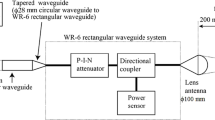Abstract
Ultraviolet light is a non-ionizing radiation that induces photochemical reactions in the tissue. Its spectral A and B ranges are partially absorbed by the cornea and/or lens thus causing damage on the cellular, cell physiological and molecular level. UV-A does not seem to damage the cornea permanently and its effects in the lens have a very prolonged latency period. Typical reactions of the cornea are oedema, punctate keratitis (photoelectric keratitis) and neovascularization. In the lens all reactions that could be evidenced, were located in the epithelium and in the outer cortical fiber cells.In vivo UV-A induces swelling and slight vacuolation of the anterior suture system, but apart from these transient effects, only very limited permanent damage could be demonstrated. UV-B induces the formation of an anterior subcapsular cataract, starting also with vacuolation of the suture system. These morphological characteristics can be visualized at the slitlamp microscope. Histologically, sutural irregularities (UV-A) and epithelial hyperplasia with capsular multiplication (UV-B) as well as desintegration of the anterior suture system could be observed. Patho-physiologically, a reduction of lens fresh weight (UV-B) as well as changes of the equilibrium of reduced and oxidized glutathione (GSH/GSSG) could be demonstrated. On the protein-biochemical level, changes in the ratio of water-soluble versus water-insoluble protein could be evidenced, as well as effects on specific crystallin fractions, namelyα-crystallin. In addition, the appearance of a newly synthetized 31 kDa protein could be demonstrated in UV-B irradiated mice.
Similar content being viewed by others
References
Lerman S. Radiant energy and the eye. New York: MacMillan Publishing Co., 1980.
Bener P. Spectral intensity of natural ultraviolet radiation and the dependance of various parameters. In: Urbach F, ed. The biological effects of ultraviolet radiation. Oxford: Pergamon Press, 1972, 312–42.
Schulze R. Strahlenklima der Erde. Darmstadt: Steinkopf, 1970.
Sliney DH. Physical factors in cataractogenesis: ambient ultraviolet radiation and temperature. Invest Ophthal Vis Sci 1986; 27: 781–90.
Javitt JC, Taylor HR. Ocular protection from solar radiation. In: Tasman W, Jaeger EA, eds. Duane's clinical ophthalmology, Vol 5. Philadelphia: JB Lippincott Company, 1991, chapter 55.
Javitt JC, Taylor HR. Absorptive lenses: The need for ocular protection. Clinical Modules for Ophthalmologists. Vol IX, Module 3. American Academy of Ophthalmology, 1991.
Bachem A. Opthalmic ultraviolet action spectra. Am J Ophthalmol 1956; 41: 969–75.
Boettner EA, Wolter JR. Transmission of the ocular media. Invest Ophthalmol 1962; 1: 776–83.
Hemmingsen EA, Douglas EL. Ultraviolet radiation thresholds for corneal injury in antarctic and temperate-zone animals. Comp Biochem Physiol 1970; 32: 593–600.
Sisk DR, Wegener A, Hockwin O. An improved procedure for fixation and embedding of whole, intact lens tissue for light microscopy. Graefes Arch Clin Exp Ophthalmol 1986; 224: 134–42.
Bessems GJH, Dragomirescu V, Möller B, Korte I, Hockwin O. Biochemical analysis of bovine lens sections obtained by a new sectioning device. Lens Eye Tox Res 1989; 6 (1&2): 175–82.
Kojima M, Wegener A, Hockwin O. Regional enzymatic analysis of UV-B and streptozotocin induced diabetic cataract lenses. Doc Ophthalmol 1991; 77: 139–40.
Hightower K, McCready J. Mechanisms involved in cataract development following near-ultraviolet radiation of cultured lenses. Curr Eye Res 1992; 11: 679–89.
Feldhaus G. Histologische Veränderungen an der Rattenlinse nach kombinierter Behandelung mit Penicillamin und UV-B-Bestrahlung. Thesis, University of Bonn, 1993.
Jose JG, Pitts DG. Wavelength dependency of cataracts in albino mice following chronic exposure. Exp Eye Res 1985; 41: 545–63.
Schmidt, J. Cocataractogene Effekte von UV-A-Bestrahlung und Diabetes Mellitus auf die Rattenlinse. Thesis, University of Bonn, 1988.
Schmidt J, Schmitt C, Wegener A, Ohrloff C, Hockwin O. Syn- und kokataraktogene Wirkung ultravioletter Strahlung auf die Entwicklung einer diabetischen Katarakt. Spektrum Augenheilk 1988; 2: 1–6.
Schmitt C. Tierexperimentelle Untersuchungen früher Veränderungen der Augenlinse nach Röntgen- und UV-A-Bestrahlung. Thesis, University of Bonn, 1988.
Rohde P. Veränderungen im Linsenstoffwechsel unter Röntgen und UV-B-Bestrahlung und Behandlung mit dem Aldose-Reduktasehemmer AL-1576, untersucht an weiblichen Brown-Norway-Ratten. Thesis, University of Bonn, 1991.
Jose JG, Koch H-R, Respondek A. Histologic observations of the lenses of psoralen + UV-A treated albino rats and a theory as to the underlying mechanism. Graefes Arch Clin Exp Ophthalmol 1982; 219: 44–53.
Respondek A. Kataraktentwicklung durch 8-Methoxypsoralen und langwelliges Ultraviolet. Histologische Untersuchungen an der Rattenlinse. Thesis, University of Bonn, 1983.
Kurth RC. Biochemische Veränderungen der Rattenlinse nach UV-B-Bestrahlung und Behandlung mit D-Penicillamin. Thesis, University of Bonn, 1992.
Schmitt C, Schmidt J, Wegener A, Hockwin O. Ultraviolet radiation as a risk factor in cataractogenesis. In: Hockwin O, Sasaki K, Leske MC, eds. Risk factors for cataract development. Dev Ophthalmol 1989; 17: 169–72.
Forker C, Wegener A, Graw J. Effects of UV-B radiation on a hereditary suture cataract in mice. In preparation.
Jose JG, Yielding KL. ‘Unscheduled’ DNA synthesis in lens epithelium following ultraviolet irradiation. Exp Eye Res 1977; 24: 113–19.
Jose JG. The role of DNA damage, its repair and misrepair in the etiology of cataract: A review. Ophthalmic Res 1978; 10: 52–62.
Dillon J. Photochemical mechanisms in the lens. In: Maisel H, ed. The Ocular Lens. New York: Marcel Dekker, 1985: 349–66.
Zigman S. Photobiology of the lens. In: Maisel H., ed. The Ocular Lens. New York: Marcel Dekker, 1985: 301–47.
Lerman S. Human ultraviolet radiation cataracts. Ophthalmic Res 1980; 12: 303–14.
Schmidt J, Brettner S, Wegener A, Hockwin O. Ultraviolet-induced changes in corneal transmission properties and influence on Scheimpflug photography. Ophthalmic Res 1990; 22: 365–70.
Wegener A, Hockwin O. Relevance of cataract models as a tool to evidence a co- or syncataractogenic potential of drugs in preclinical studies. Plenum Publishers (in press).
Author information
Authors and Affiliations
Rights and permissions
About this article
Cite this article
Wegener, A.R. In vivo studies on the effect of UV-radiation on the eye lens in animals. Doc Ophthalmol 88, 221–232 (1995). https://doi.org/10.1007/BF01203676
Issue Date:
DOI: https://doi.org/10.1007/BF01203676




